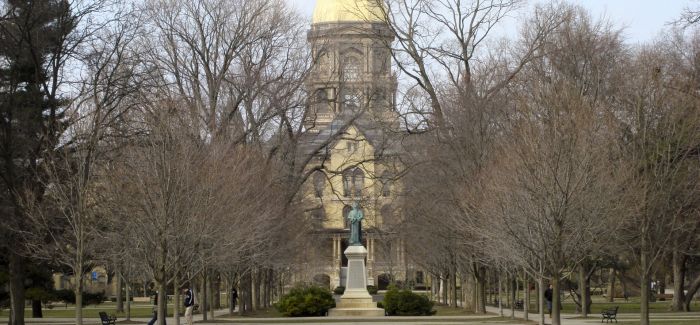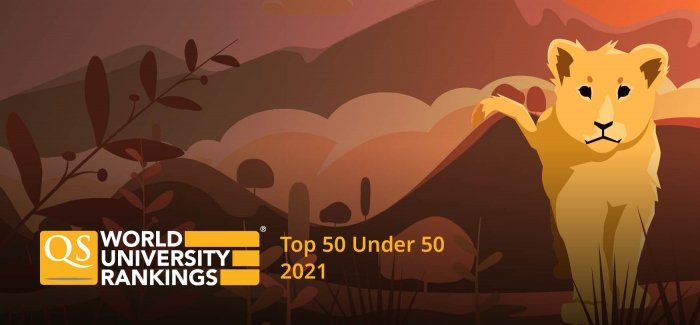The University of Oxford has been ranked as the best university in the Times Higher Education World University Rankings 2019.
Unveiled today at the THE World Academic Summit in Singapore, the rankings see Japanese universities outnumber those from the UK for the first time ever. Despite the strong performance of both Oxford and the University of Cambridge, signs exist that other UK universities are beginning to stumble and Asian institutions are seemingly well-placed to take advantage.
According to Ellie Bothwell, of the THE rankings: "Stiff competition from Asia will put European universities under a great deal of pressure over the coming 12 months."
However, they still have some way to go with no Asian institutions featuring in the Times Higher Education World University Rankings 2019 top 20.
Times Higher Education World University Rankings 2019 |
||
| Rank | University | Location |
| 1 | University of Oxford | United Kingdom |
| 2 | University of Cambridge | United Kingdom |
| 3 | Stanford University | United States |
| 4 | Massachusetts Institute of Technology (MIT) | United States |
| 5 | California Institute of Technology (Caltech) | United States |
| 6 | Harvard University | United States |
| 7 | Princeton University | United States |
| 8 | Yale University | United States |
| 9 | Imperial College London | United Kingdom |
| 10 | University of Chicago | United States |
By contrast, the QS World University Rankings 2019 published earlier this year contained three Asian institutions in its top 20: the National University of Singapore (NUS), Nanyang Technological University (NTU) and Tsinghua University. The differences don't end there, although the two top 10s do have some similarities. Key differences include the fact the Times Higher Education World University Rankings 2019 finds space in the top 10 for Princeton and Yale, while QS names ETH Zurich and UCL (University College London) among their top 10.
THE World University Rankings 2019 v QS World University Rankings 2019 |
||
| Rank | THE World University Rankings 2019 | QS World University Rankings 2019 |
| 1 | University of Oxford | Massachusetts Institute of Technology (MIT) |
| 2 | University of Cambridge | Stanford University |
| 3 | Stanford University | Harvard University |
| 4 | Massachusetts Institute of Technology (MIT) | California Institute of Technology (Caltech) |
| 5 | California Institute of Technology (Caltech) | University of Oxford |
| 6 | Harvard University | University of Cambridge |
| 7 | Princeton University | ETH Zurich - Swiss Federal Institute of Technology |
| 8 | Yale University | Imperial College London |
| 9 | Imperial College London | University of Chicago |
| 10 | University of Chicago | UCL (University College London) |
Differences between the Times Higher Education World University Rankings 2019 and their QS equivalent can largely be explained by differences between the methodologies used to rank universities. The QS methodology, which can be viewed here, uses six metrics, including measures of academic and employer reputation which are based on worldwide surveys collating tens of thousands of responses. A comparison between this and the THE methodology can be found below.
Times Higher Education World University Rankings v QS World University Rankings: Methodologies |
|
| Times Higher Education* | QS |
|
Teaching (the learning environment): 30%
|
Academic reputation: 40% Based on our Academic Survey, it collates the expert opinions of over 80,000 individuals in the higher education space regarding teaching and research quality at the world’s universities. In doing so, it has grown to become the world’s largest survey of academic opinion, and, in terms of size and scope, is an unparalleled means of measuring sentiment in the academic community. |
|
Research (volume, income and reputation): 30%
|
Employer reputation: 10% Our Employer Reputation metric is based on over 40,000 responses to our QS Employer Survey, and asks employers to identify those institutions from which they source the most competent, innovative, effective graduates. The QS Employer Survey is also the world’s largest of its kind. |
|
Citations (research influence): 30%
|
Citations per faculty: 20% All citations data is sourced using Elsevier’s Scopus database, the world’s largest repository of academic journal data. This year, QS assessed 66 million citations from 13 million papers once self-citations were excluded. |
|
International outlook (staff, students, research): 7.5%
|
International faculty ratio/ International student ratio: 5% each A highly international university provides students with international sympathies and global awareness: soft skills increasingly valuable to employers. Both of these metrics are worth 5% of the overall total. |
|
Industry income (knowledge transfer): 2.5% |
Faculty/student ratio: 20% Teaching quality is typically cited by students as the metric of highest importance to them when comparing institutions using a ranking. It is notoriously difficult to measure, but we have determined that measuring teacher/student ratios is the most effective proxy metric for teaching quality. |
*Information used from THE 2018 methodology.













